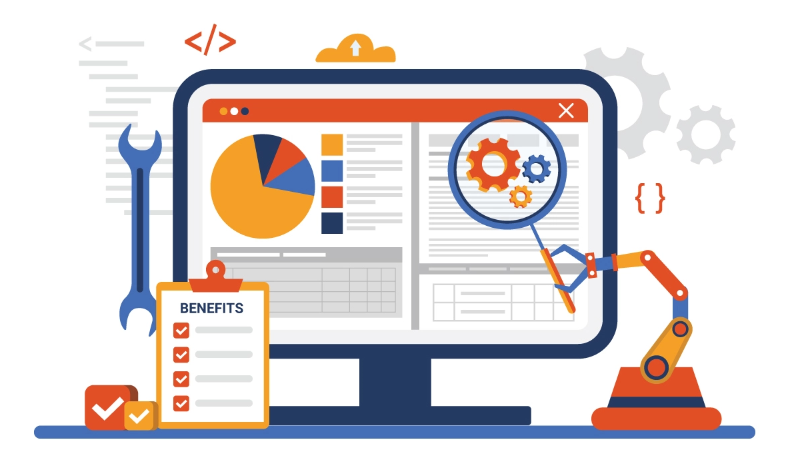Business
Why Do Businesses Need Salesforce Test Automation?

Salesforce is a renowned CRM platform in the global market. Several organizations use this to streamline their business operations – marketing, sales, and support. To make it more beneficial to the users, Salesforce releases frequent updates. However, simply putting up these updates is not a worthy choice. Thus, Salesforce testing comes into play. For this, QA teams rely on Salesforce automation tools. These tools help analyze the performance, efficiency, and test coverage of the Salesforce application.
In this blog, we will discuss test automation’s benefits and associated challenges. We will also list some of the renowned automation tools in the market.
Benefits of Salesforce Test Automation
- Efficiency and Time Savings: Manual testing of Salesforce applications can be time-consuming and error-prone. Test automation allows businesses to run tests quickly and consistently, reducing the time and effort required for testing activities.
- Accuracy and Consistency: Salesforce automation tools perform the same actions and checks consistency every time they are executed. This ensures the tests are accurate and reliable, reducing the risk of human error in testing processes.
- Regression Testing: Salesforce applications are often updated or customized. Automated tests can be easily rerun to check for regressions, ensuring new changes do not break existing functionality.
- Increased Test Coverage: Automated tests can cover many scenarios and use cases, including time-consuming or difficult to test manually. This helps identify and address issues that might be missed with manual testing.
- Faster Feedback: Automated tests, including those in the realm of qualtrics competitor evaluation, provide quick feedback to developers and testers, allowing them to identify and fix issues early in the development cycle. This can lead to faster delivery of high-quality Salesforce applications.
Types of Salesforce Testing
- Unit Testing: This involves testing individual code units to ensure they perform as expected. Salesforce provides a testing framework for Apex code.
- API Testing: Verify that data and functionality integration with external systems, such as third-party applications or databases, is working correctly.
- End-to-End Testing: This involves testing the complete Salesforce application from the user’s perspective, covering various use cases and scenarios.
- User Acceptance Testing (UAT): Business users perform UAT to ensure the application meets their requirements and expectations.
- Manual Functional Testing: Testing the application’s functionality manually by following test scripts and use cases.
Challenges Associated With Salesforce Test Automation
- Test Data Management: Maintaining and managing test data for Salesforce can be challenging, especially when dealing with complex data relationships or large volumes of data. Ensuring the availability of realistic and representative test data is crucial for meaningful testing.
- Test Script Maintenance: As Salesforce applications evolve and change, automated test scripts may need frequent updates to reflect these changes accurately. Maintaining an extensive suite of test scripts can become a resource-intensive task.
- Test Execution Time: Running a comprehensive suite of automated tests for a Salesforce application can be time-consuming, leading to longer feedback cycles. Ensuring efficient test execution is essential, especially for CI/CD pipelines.
- Parallel Testing: Coordinating parallel test execution, especially for large suites of tests, can be challenging. Ensuring that tests do not interfere with each other requires careful planning.
Top Salesforce Test Automation Tools
Opkey
It is a zero-code test tool in the market that leverages new-age technology, like artificial intelligence. It utilizes AI and ML algorithms that streamline the testing process. Its drag-and-drop interface makes it easy for the employees to participate in the testing process. Its key technical features, like self-healing technology, automatically fix the test scripts in case they’re broken.
Provar
Provar is one of the Salesforce automation tools specifically designed for Salesforce applications. It provides a no-code/low-code environment for creating and running automated tests for various Salesforce components. It offers out-of-the-box support for Salesforce and integrates seamlessly. It is designed to simplify Salesforce test automation. While it excels at Salesforce-specific testing, it may not be as versatile for testing non-Salesforce web applications.
Selenium
It is a widely used open-source automation framework for web application testing. Salesforce can be automated using Selenium WebDriver, which allows you to write automated scripts in various programming languages like Java and Python. Selenium is highly customizable and provides robust support for browser automation. It is suitable for automating Salesforce’s web-based interface. However, setting up and maintaining Selenium automation for Salesforce can be complex, especially for those new to automation.
Tricentis Tosca
Tricentis Tosca is an enterprise-level test automation tool that supports Salesforce testing and a wide range of other applications. It provides end-to-end test automation capabilities. Tosca offers a comprehensive test automation solution, including support for Salesforce, web, mobile, and API testing. It has a visual modeling approach for test creation. It is a powerful but complex tool, and its licensing costs can be high for small to medium-sized organizations.
Wrapping Up!
Salesforce is quite beneficial for organizations that want to streamline customer relationship management. However, automation testing cannot be underestimated. It helps automate the testing process. To make the most out of your Salesforce platform, investing in the right tool is necessary. Opkey is a codeless Salesforce automation tool in the market that utilizes AI to analyze the test scripts. Its key features, like self-healing technology, one-click test creation, etc., leverage the overall testing process.
-

 Tech1 year ago
Tech1 year agoHow to Use a Temporary Number for WhatsApp
-

 Business2 years ago
Business2 years agoSepatuindonesia.com | Best Online Store in Indonesia
-

 Social Media1 year ago
Social Media1 year agoThe Best Methods to Download TikTok Videos Using SnapTik
-

 Technology1 year ago
Technology1 year agoTop High Paying Affiliate Programs
-

 Tech10 months ago
Tech10 months agoUnderstanding thejavasea.me Leaks Aio-TLP: A Comprehensive Guide
-

 FOOD1 year ago
FOOD1 year agoHow to Identify Pure Desi Ghee? Ultimate Guidelines for Purchasing Authentic Ghee Online
-

 Instagram3 years ago
Instagram3 years agoFree Instagram Auto Follower Without Login
-

 Instagram3 years ago
Instagram3 years agoFree Instagram Follower Without Login




















